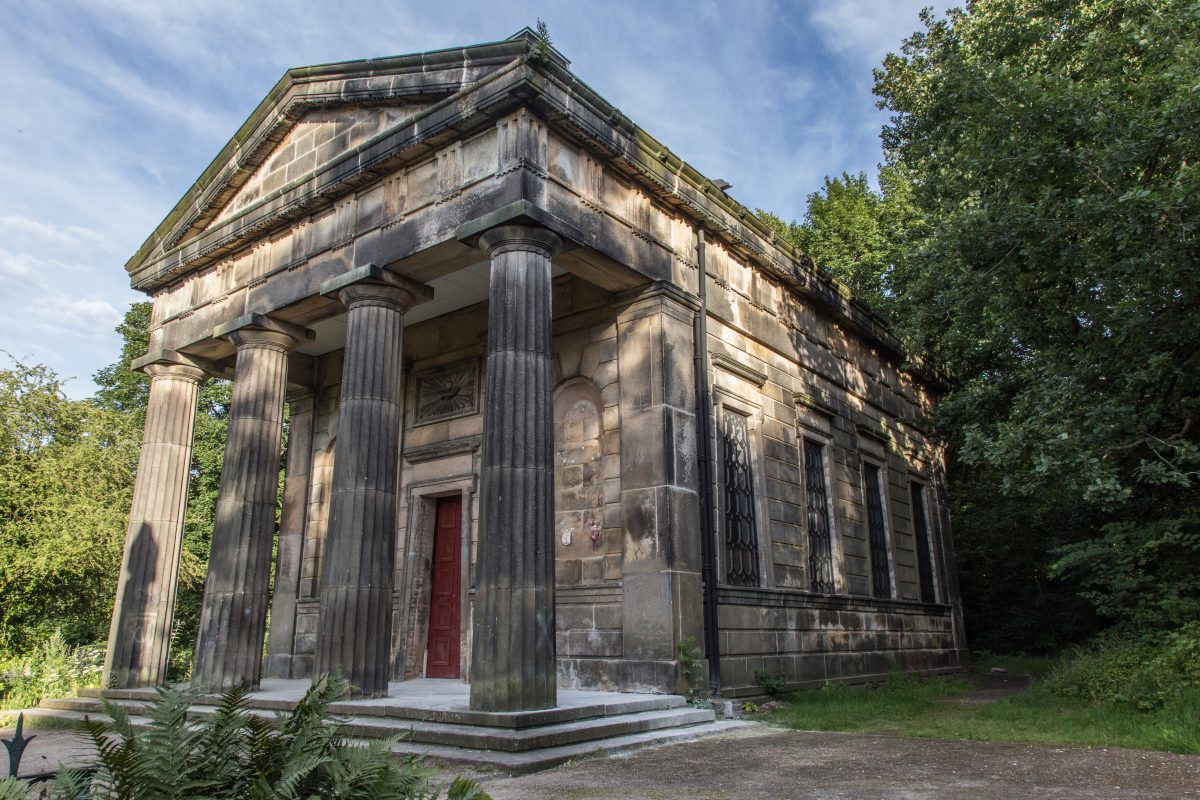
The Samuel Worth Chapel. Source: SGCT
Samuel Worth, the son of Thomas Worth, a builder, and Elizabeth Arnold was born in Hougham, Lincolnshire where he was baptised in All Saints’ Church on 13 March 1798.
Worth’s career as an architect began in Sheffield around 1824. He was in partnership with Joseph Botham from 1826 to 1827, then with James Harrison from 1828 to 1831 during which time his notable works were the Free Writing School, Townhead Street, 1827–28, and Surgeons’ Hall, Medical Society, Surrey Street, 1829.
Samuel Worth married Anne Andrews on 11 March 1829 in Sheffield Parish Church. During the early 1830s Worth worked on eighteen dwelling houses on Glossop Road and on the Cutlers’ Hall with Benjamin Broomhead Taylor before beating Taylor into second place in the competition for the design of Sheffield General Cemetery. Later works included Sheffield and Hallamshire Bank, Church Street, 1838, and Hayfield Union Workhouse, New Mills, Derbyshire in 1839. Now he is probably best known in Sheffield for his neo-classical design of the Nonconformist Chapel. The Chapel was renamed the Samuel Worth Chapel in his honour after the renovations and reopening of the building in 2005.
Around 1840 Worth entered into a partnership with John Frith and together they designed the Moorgate Cemetery, near Rotherham. The partnership lasted until 1846, during which time Worth, his wife Anne and three children Andrew, Ann, and Eliza were living on St George’s Terrace. Later in the 1840s, although Worth’s business continued to be based in Sheffield, he and his family lived at Holme in Nottinghamshire. Anne Worth died there in December 1855. Afterwards Worth moved to live in Worksop. Amongst his pupils in his Sheffield practice were John Dodsley Webster and John Brightmore Mitchell-Withers, both of whom made significant contributions to the built environment of Sheffield.
Samuel Worth died at his home in Clinton Place, Worksop, on 26 January 1870. Both he and his wife Anne were buried in Sheffield General Cemetery in plot Q 88 in the Anglican area.
You can read more about the history of Sheffield General Cemetery in the SGCT publications For the Living and the Dead, Sheffield General Cemetery – Then & Now, and Recollections of a Former Occupant.



